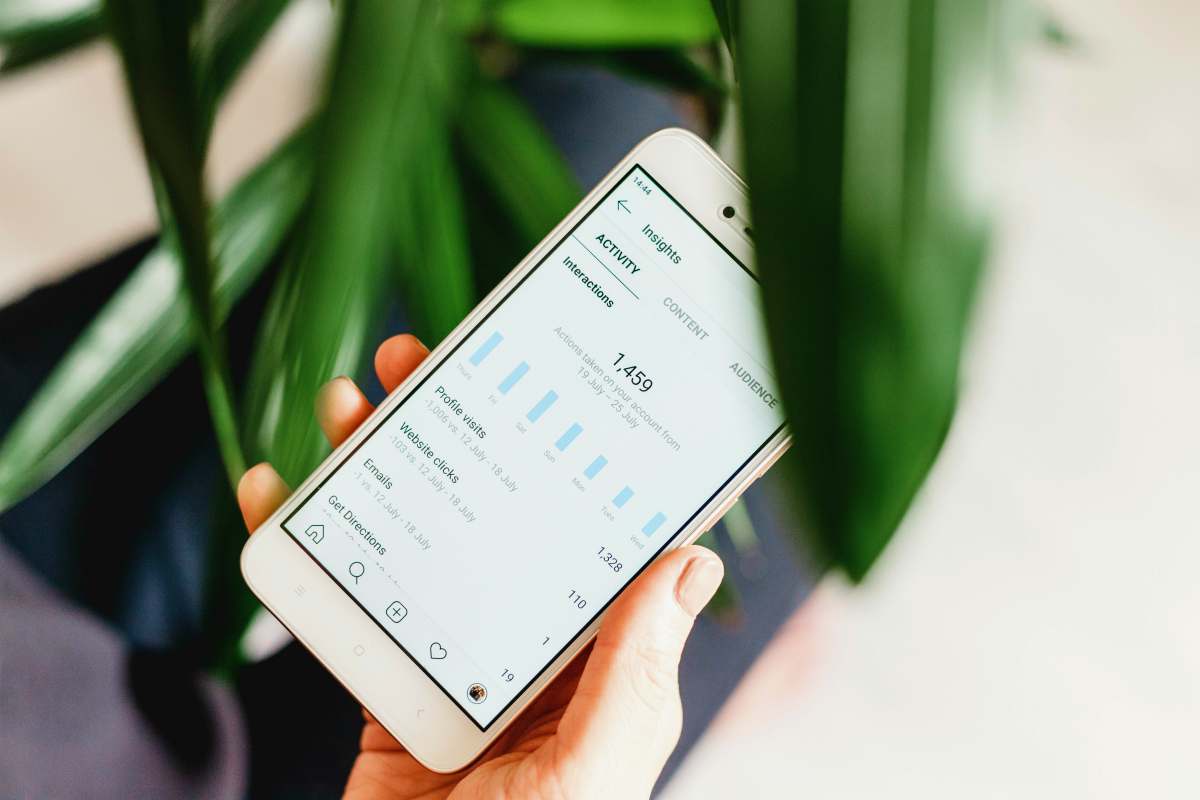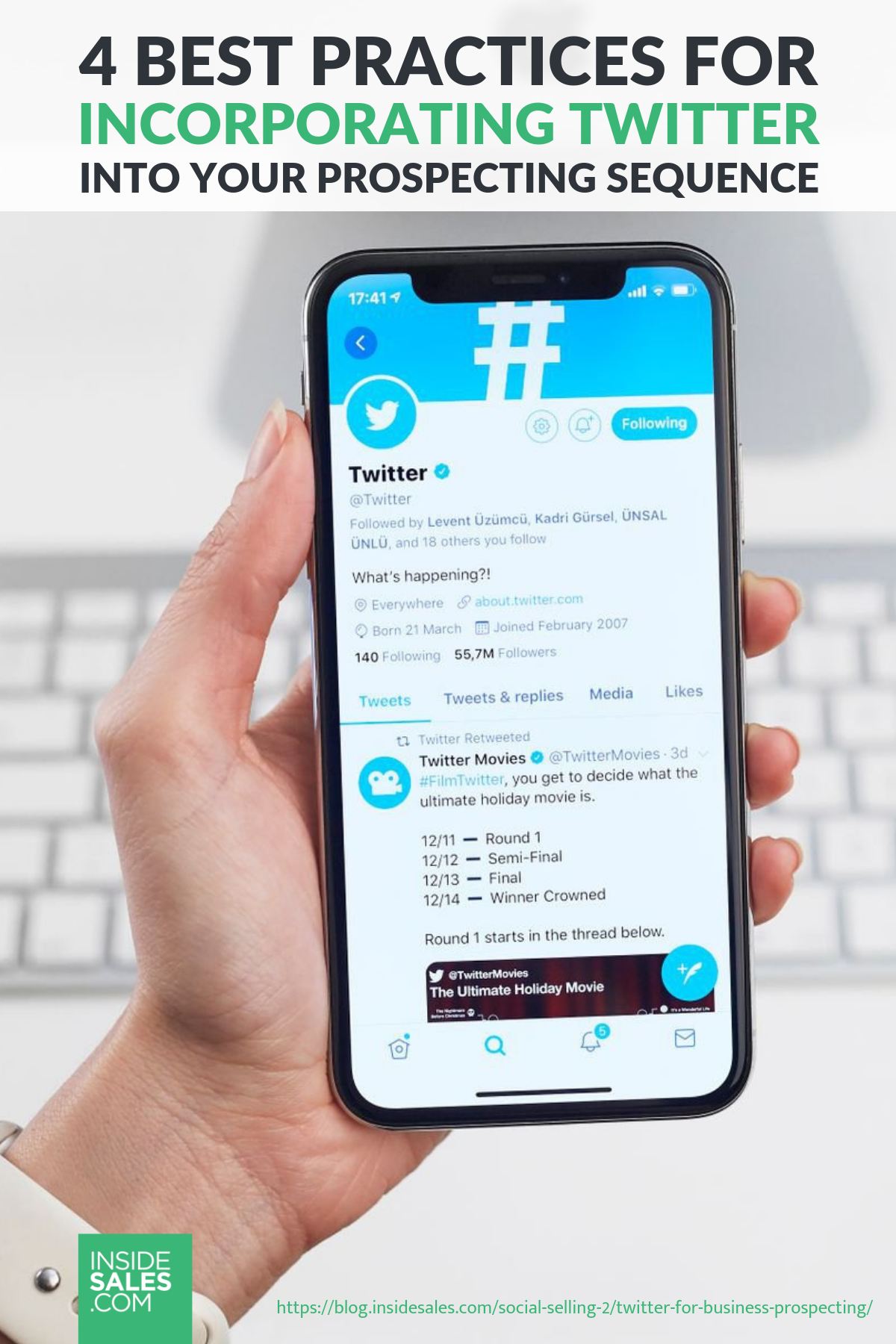4 Best Practices For Incorporating Twitter Into Your Prospecting Sequence
Sujan Patel
Ever thought of how you can incorporate Twitter into your prospecting sequence for business? Read on for the best practices you can follow to generate leads and increase sales.
RELATED: The 7 Levels of Social Media Mastery
In this article:
- Twitter Often Overlooked for Prospecting
- Keep It Omni-Channel
Best Ways to Use Twitter for Business
Twitter Often Overlooked for Prospecting
Email’s popularity as a prospecting channel is no secret. The Radicati Group estimates that we sent 281+ billion personal and professional emails per day in 2018, and 89% of marketers say that email is their primary channel for lead generation.
In contrast, only 12 out of every 100 sales executives use Twitter for business conversations. But, just because Twitter is often overlooked for prospecting doesn’t mean that it doesn’t work. In fact, PipeCandy calls it “the best channel” they’ve found so far for one-on-one conversations with prospects.
If you really want to make sure you’re covering all the bases with your prospecting sequence, don’t ignore this important channel. Twitter is a great way for businesses to get leads into their sales funnel if they know how to do it right.
Sales Prospecting Definition: This refers to the first stage in the sales process that identifies prospects or potential customers. Its goal is to build a database of customers and communicate with them to convert them into current clients.
Here are four best practices to use Twitter for business and for incorporating it into your prospecting sequence today.
1. Set Up Your Twitter Profile with Prospecting in Mind
Set yourself up for success by making sure every aspect of your Twitter profile is leveraged to your business advantage. Here are a few key tips for setting up and maintaining your profile.
Profile Picture and Background
Keep your profile photo professional with a simple headshot or your brand’s logo. It’s also a good idea to create a custom header for your Twitter profile, giving you an additional branding opportunity.
Every month or so, change your header to reflect whatever is going on at your company, whether you’re running a sale or promoting an upcoming event.
Handle
Your 15-character Twitter handle (your @name) is how prospects identify and remember you, so make it count. (Your handle, or URL shortener, becomes your URL, too, making this name even more important.)
Don’t use numbers – they tend to make people think of “spam” – but do pick something that’s as close to your company’s name as possible. That way, you’ll be easy to find.
If you’re not 100% sure what you want your Twitter handle to be, go ahead and pick something anyway – 319 people sign up for a Twitter personal account every minute, so reserve a name now even if you might not use it later.
Bio
Rather than just a rote description of your company, use this space to show your target audience of what you do and how you can help them. It’s also essential to include a link to your website – after all, for most companies, that’s where the sales happen.
You can consider including your location and business hours, too, if relevant.
Stay Active
It’s critical to keep your Twitter business account active, especially for your ad campaigns. Life is busy, and posting on a social network is often one of the first things to fall through the cracks.
Posting a blog post consistently is absolutely essential, though — valuable content makes people trust you, which in turn makes them more likely to buy from you.
To maintain active social media accounts with the least amount of effort, take advantage of a scheduling tool like Hootsuite for your campaign. Every Monday morning, spend 15 to 30 minutes to schedule your tweets for the week, and you’ll be good to go until the following week.
Pro Tip: Hootsuite also makes it easy to track your analytics.
Of course, you still need to engage with your Twitter followers. But, even just 15 minutes a day of responding to comments and searching out new prospects or potential customers through social platforms can make a huge difference to your future sales.
Consider engaging with your followers first thing each morning so you don’t forget.
Use Twitter Cards
Another way to improve your usage of Twitter in your prospecting sequence is to use Twitter cards.
How can this help? It’s simple.
These Twitter cards with your business’ customized ads and images will help you page standout. Every time a follower retweets your post, the Twitter cards also follow the post.
Sure, you can share tweets about your products, but if people don’t see it, it may not gather as much as if a card was attached to it.
2. Be Proactive and Find Prospects

Use the Right Hashtags
As a public forum, Twitter is one of the most ideal tools for social prospecting for business owners. You can listen to what people are talking about in real time and identify their interests, honing in on those who are interested in your product or service category.
One way to do this is by searching popular hashtags of trending topics that are relevant to your small business. For example, if your company sells running shoes, spend time reading through hashtags like:
- #running
- #marathontraining
- #morningrun
What you need to keep in mind though is to not use just any kind of hashtag. You need to know which ones you should use to reach a wider audience.
Use one to two hashtags with the most engagements for your Twitter page to reach more people. To figure out which hashtags to use, consider the following:
- The number of retweets of tweets containing the hashtag
- The number of views it received (for videos and clips)
- How many times the hashtag was used
- The replies tweets with the hashtag got
Keep Up with Buzzwords
Similarly, you can also search for popular industry buzzwords that professionals or influencers use to connect with peers and use those to identify potential prospects. Just remember that buzzwords (and hashtags) are constantly changing, so keep on top of trending keywords and search them frequently.
Event hashtags are another path to potential prospects. If you search for popular events or conferences in your industry, odds are you’ll find plenty of professionals in your target audience.
These are key prospects to hone in on.
Don’t forget to observe your competitors and see who they’re interacting with. Look for people in your city who are having conversations around your industry or service and then focus on organic growth to generate leads.
Once you’ve discovered where your target audience hangs out, join discussions and make yourself available. Be on the lookout for buying signals, such as complaints about a competitor.
This is another reason Twitter for business prospecting is ideal.
Engage with Recommendations
You can also search for phrases such as “looking for recommendations” or “need advice on,” which makes it easier to engage at the beginning of the sales cycle.
Remember, there’s a reason Twitter is the second among the leading social media platforms used today, and why 87% of companies have incorporated it as part of their content marketing mix – active users like it, and they use it. You should too.
You can’t expect to make sales unless you go where your customers are. If you play your social media cards right, other pages will be suggesting your business for those queries.
RELATED: Are You Social Selling or Just Being Salesy on Social Media?
3. Engage and Build Relationships – Don’t Sell
Once you have your prospects, engage with them. Don’t just start tweeting at prospects when using Twitter for business prospecting.
Instead, ask and answer questions. Retweet their tweets. Follow them.
Give them relevant or helpful information when they ask for it. Get to know them, and become a familiar voice in their social world.
Engagement leads to sales.
If a prospect is following you, try sending a direct message after an appropriate interval. Mention one of your interactions, or otherwise make it personal.
Share email addresses or phone numbers, then include a link to something of value that’s tailored to them – an offer, an article you think they might enjoy, or a resource they might find helpful.
Ask them questions to get the conversation started.
Whatever you do, don’t jump into sales mode right away. Instead, find out how you can be helpful to them or solve a pain point.
Treat your prospects like real people, not just numbers.
After all, sales is all about building relationships, so use Twitter to build relationships at scale. “The goal of using Twitter isn’t to sell something at the very second you tweet,” says Ginny Maneo of Hubspot.
“It’s to set the relationship groundwork with prospects. It’s to establish trust with them, so they feel comfortable returning your phone calls or chatting through emails.”
You can build that trust by establishing yourself as an expert, enhancing brand awareness. The Twitter content you produce or share should demonstrate your industry expertise while also offering value.
That content will help you build relationships, and when the time is right, you can leverage those relationships to your advantage to grow your business.
Engage with Influencers
If you’re just starting your social media presence, gaining followers is important. Aside from organically growing your Twitter followers, connecting and interacting with influencers can help increase your following.
Get Twitter followers fast by looking for people within the circle of your potential customers and engaging with them. If you want a wider reach, look for influencers with a certain number of followers.
Not sure which ones you should be following and engaging with? Use tools to help you with an advanced search.
Awario helps you identify influencers in the niche you want and shows you which ones have the most Twitter followers or the most engagements with their own networks.
Aside from listing their follower count, this Twitter followers tracker also analyzes Twitter mentions, keywords, and content across other social media platforms. It ranks influencers based on their engagements so you can decide if building connections with them will benefit your business.
Build Your Twitter List
If there are pages or people you want to keep track of, build a Twitter list. You should also make this list public so your followers and other people who will visit your Twitter profile will see it.
You can set up your profile to follow only the pages on your list or set it up alongside your general timeline. This way, you won’t miss any updates from these pages.
If your profile is newly created, you may not know who to include in your list yet. In that case, you can check public lists on the profiles of influencers you follow, especially if they’re part of your target audience.
You can also keep track of competitors this way. You should check on the public lists that added your page as well.
4. Analyze and Refine Your Process

Analyze what you’ve learned about your audience and how they communicate with you. Look at how much of your website traffic is from Twitter and whether your Twitter leads are turning into good sales opportunities.
Then, put that insight to good use as you continue interacting with more prospects and move toward closing sales.
Eventually, as you get further down in the sales funnel, you’ll want to move the conversation with your prospects from Twitter to email (or some other off-platform channel). This more personal, direct approach will help your prospects continue to move toward converting into customers.
Make sure you’re adding the insights you’ve gained about each prospect to your CRM.
Keep It Omni-Channel
Twitter is a great tool for finding, approaching, and building relationships with potential prospects. It allows you to be a helpful resource while also establishing a positive presence for your brand.
You can build a following and engage with quality potential leads, eventually moving the conversation over to other channels.
These leads may choose to visit your website, Facebook or Instagram pages, and other avenues connected to your business.
Adding Twitter to your prospecting sequence can be incredibly beneficial, but remember, it’s just one step in the process. The best approach is an omni-channel one.
With these four Twitter for business tips, you’ll not only increase lead generation but also build good and trusting relationships with your market. Just remember to always create trust with your prospects, and everything else will follow.
Have you utilized Twitter for business prospecting? How was your experience? Tell us in the comments section below.
Up Next:
- Why Social Media Is Overrated For Lead Generation
- 3 Deadly Mistakes Uncovered in Social Media
- How To Create A Cultural Transformation For Your Inside Sales Team
Editor’s Note: This post was originally published on April 22, 2019, and has been updated for quality and relevancy.
